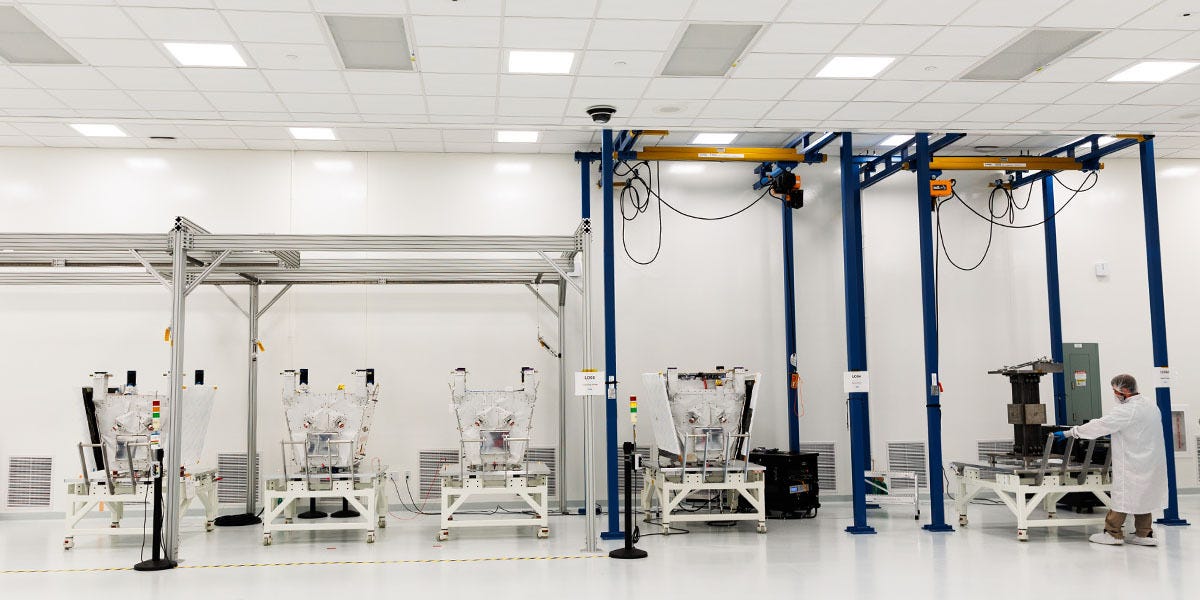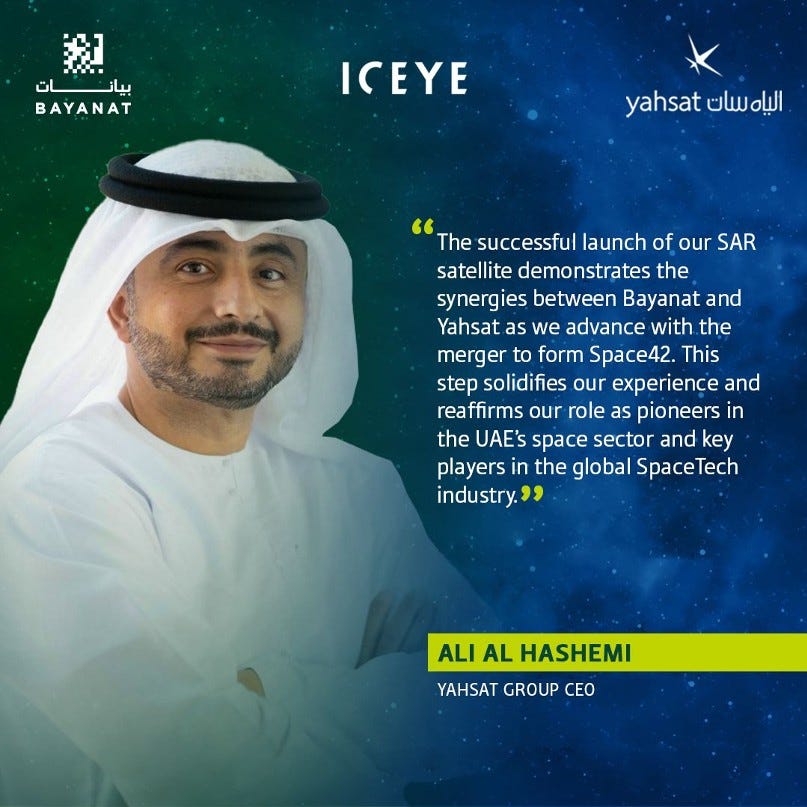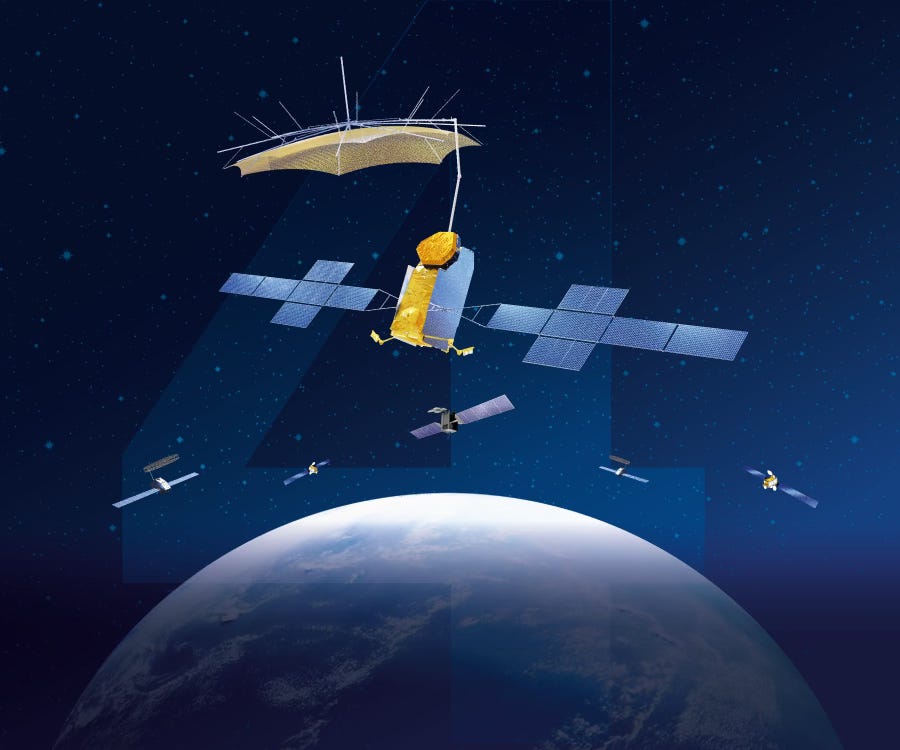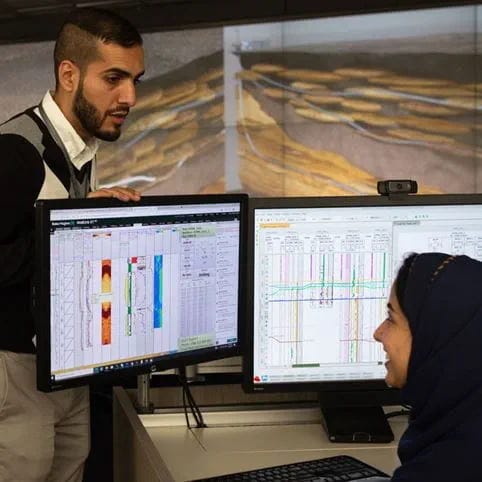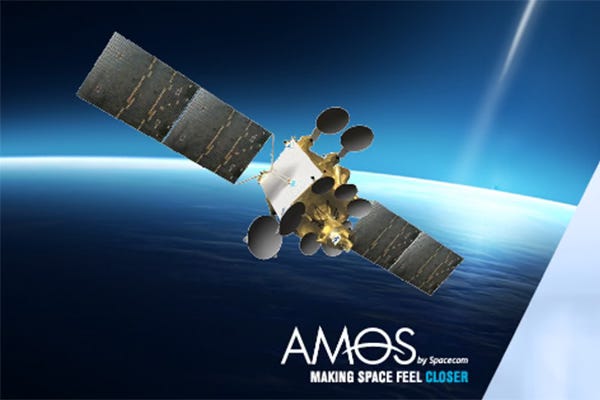Middle East Space Roundup: 26 August to 1 September 2024
A summary of all the space news in the Greater Middle East over the past week, brought to you by AzurX
The following are the major space developments in the Greater Middle East region tracked by Middle East Space Monitor over the past week:
UAE Space Developments
UAE’s Marlan Space Creates Joint Venture with Loft Orbital Called Orbitworks
Abu Dhabi-based Marlan Space, affiliated with International Holding Company (IHC), has launched Orbitworks in partnership with Loft Orbital, marking a significant development in the UAE's space sector. Orbitworks is poised to become the first private company in the Middle East to manufacture commercial low-Earth orbit (LEO) satellite constellations. With an initial investment exceeding $100 million, the venture aims to produce up to fifty 500 kg satellites annually. The joint venture will begin constructing a cutting-edge facility for satellite integration and testing, with the first satellites expected to launch by early 2026. Orbitworks plans to collaborate with local component manufacturers and AI companies, enhancing the UAE’s position as a global space technology hub. This initiative underscores the UAE’s commitment to advancing its space capabilities and integrating space technology with local industries.
Introducing Foresight-1, the UAE’s First SAR Earth Observation Satellite
Bayanat, a subsidiary of G42, has successfully launched Foresight-1, the UAE's first synthetic aperture radar (SAR) satellite as part of the country's Earth observation space programme. This achievement places the UAE among the 20 countries globally operating SAR space assets, significantly enhancing its position in the space sector. Hasan Al Hosani, Managing Director of Bayanat, highlighted the strategic roadmap developed with Yahsat to deploy a constellation of SAR satellites in the near future. The Foresight-1 satellite offers continuous, high-resolution monitoring capabilities, operating effectively in all weather conditions and lighting. This technology is expected to improve Bayanat and Yahsat's geospatial solutions, particularly in disaster management, marine monitoring, and smart mobility applications. The project, with over 30% Emirati participation, demonstrates the UAE's commitment to developing national expertise in the space sector. The anticipated merger between Bayanat and Yahsat, expected to complete by year-end, aims to establish Space42 as a leading Emirati space company, aligning with the National Space Strategy 2030 and supporting the country's broader space ambitions.
UAE’s Foresight-1 SAR Satellite Leads the Region in Satellite Technology
The Middle East is experiencing a revolutionary shift in satellite technology, particularly with the advent of synthetic aperture radar (SAR) satellites. These advanced satellites, capable of operating in all weather conditions and at night, are proving invaluable for environmental monitoring, disaster management, and military surveillance. Jamil Kawar, VP of Missions at ICEYE, highlights that the smaller, lighter build of SAR satellites has significantly reduced launch costs, making them more accessible to regional organisations. The integration of application programming interfaces (APIs) has streamlined access to satellite data, enabling direct tasking and catalogue access. In the UAE, Bayanat and Yahsat are expanding their Earth observation space programme from five to seven SAR satellites, partnering with ICEYE for technology and expertise. This expansion will increase the frequency of Middle East coverage, providing near real-time, high-definition imagery for various applications including port monitoring, asset protection, and maritime domain awareness. As these technologies become more accessible, Kawar anticipates increased adoption across the region, aligning with the UAE's ambitious space programme and commitment to technological advancement.
Yahsat’s Thuraya-4 NGS Scheduled for Q4 2024 Launch
Yahsat, the UAE's leading satellite solutions provider, has announced the upcoming deployment of Thuraya-4, a next-generation satellite (NGS), in Q4 2024, with services expected to commence by 2025. This advanced mobile communications satellite is designed to enhance Thuraya's L-band services, increase space capacity, and extend coverage across Europe, the Middle East, and Africa. The Thuraya 4-NGS is part of a transformational programme to create a new ecosystem with upgraded technologies, including a reconfigurable payload and enhanced data speeds. It will incorporate modern space electronic systems and integrate satellite connectivity solutions for various applications. The new capabilities are expected to reinforce Thuraya's market leadership in maritime, Internet of Things (IoT), and data solutions, offering high throughput capabilities and competitive advantages in mobile voice satellite communications. This development represents a significant step in providing cutting-edge, cost-effective satellite communications solutions with improved performance, reliability, and security, supporting a wide range of sectors including government, defence, enterprise, and commercial.
UAE’s Al Khatim Observatory Helps Discover Powerful Cosmic Explosion
Al Khatim Astronomical Observatory in Abu Dhabi has made a significant contribution to global astronomical research by successfully observing and documenting a powerful cosmic explosion, named GRB 240825A. The observatory was the third in the world to publish results on this phenomenon, which was initially detected by NASA's Swift and Fermi space telescopes. The event, believed to be the explosion of a massive star over 6 billion light-years away, was captured through the observation of its optical afterglow. This achievement, part of a collaboration between the International Astronomical Center and the American University of Sharjah, demonstrates the UAE's growing capabilities in space science. The observatory's quick response and data collection, including the rapid fading of the afterglow, will contribute to international efforts to understand massive star evolution and death. This event underscores the importance of global cooperation in astronomical research and highlights the UAE's emerging role in the field of space science and observation.
Report: UAE’s Earth Observation Tender Apparently Progresses
Tactical Report alleges that the UAE Armed Forces have issued a tender for a new batch of Earth observation satellites, signaling a significant upgrade to their space-based reconnaissance capabilities. The tender calls for one very high-resolution satellite (25 cm) and four high-resolution satellites (50 cm or better). Major aerospace companies have been invited to bid, with Airbus Defence and Space expected to offer an updated Pléiades Neo satellite and the CO3D constellation, while Thales Alenia Space is likely to propose an updated Falcon Eye model. Israel Aerospace Industries and South Korea's Satrec Initiative have also been invited, though their participation remains uncertain. This procurement initiative is part of a strategic plan to enhance and eventually replace the UAE's existing Falcon Eye satellite network. The prompt response expected from bidders and the specific requirements outlined in the tender underscore the UAE's commitment to advancing its space-based intelligence capabilities and maintaining a technological edge in the region.
Saudi Arabia Space News
Saudi Arabia’s Aramco Unveils Extensive Satellite Activities and Plans
Aramco, Saudi Arabia’s oil and gas giant, has been leveraging satellite technology to enhance its operations since the 1980s. The company's use of satellites has evolved from basic communication services to advanced applications in geographic surveying, real-time drilling data transmission, and remote site connectivity. Aramco currently operates an extensive very small aperture terminals (VSAT) network using geostationary satellites to connect approximately 400 remote onshore and offshore platforms. The company is now exploring the integration of low-Earth orbit (LEO) satellites to improve data transmission speeds and support 5G communication networks in remote areas. Aramco has formed strategic partnerships with companies like Airbus OneWeb Satellites and GHGSat to pilot LEO satellite applications for 5G connectivity and emissions monitoring. Additionally, the company is investing in startups like OQ Technology to develop Internet of Things (IoT) coverage via satellite constellations. Looking ahead, Aramco plans to combine enhanced satellite data transmission with AI technologies for more precise infrastructure monitoring and greenhouse gas detection, positioning itself at the forefront of space technology integration in the oil and gas industry while supporting Saudi Arabia's ambitions in the global space sector.
Young Saudi Woman Engineer Contributes to NASA Lunar Rover Development
Tala Al Saedi, a citizen of Saudi Arabia and a 2024 aerospace engineering graduate from the University of Arizona, has made significant contributions to space exploration through her involvement in NASA's Lunar South Pole Prospecting Rover project. As the thermal and structure subsystem lead, Al Saedi developed crucial thermal management control systems for the rover's operation in the harsh lunar environment. Her work aligns with NASA's Artemis Programme and contributes to the potential for sustaining human presence on the Moon. Al Saedi's achievements highlight the growing role of Saudi women in STEM fields, particularly in aerospace engineering. She advocates for increased female participation in these areas and is optimistic about Saudi Arabia's future in space exploration, citing initiatives like Vision 2030. Al Saedi's experience underscores the importance of representation and international collaboration in advancing space technology, as well as the potential for young engineers to contribute to groundbreaking projects that could extend to future Mars exploration.
Israel Space Developments
Scholars: Israel’s Civilian Space Programme Has Not Fulfilled its Promise
Israel's space programme, initially driven by national security concerns in the 1980s, has undergone a significant transformation over the past decade in response to global trends towards greater commercialisation in space activities, according to Deganit Paikowsky and Avi Blasberger in a scholarly chapter published in the Oxford Research Encyclopedia of Planetary Science. Following a 2008 industry crisis, a 2010 national task force recommended that the Israel Space Agency (ISA) foster a national space ecosystem by transitioning from a state-centric model to one that promotes civilian and commercial activities. While the ISA has made efforts to implement this strategy for a decade, success has been limited. Financial constraints and a lack of national prioritisation have hindered the full realisation of the programme's potential. As a result, Israel's space ecosystem remains modest and has fallen short of its ambitious economic goals. This case study highlights the challenges small states face in adapting their space programmes to evolving global economic trends and the importance of sustained national commitment and funding in developing a competitive space industry.
Israel’s Spacecom and Government Cramping Hungary’s 4iG’s Space Ambitions
4iG, a major Hungarian telecommunications and IT provider, is ambitiously transforming itself into a vertically integrated space company, aiming to establish Hungary as a significant player in the European space sector. The company's strategy encompasses satellite development, manufacturing, and operations, as well as downstream data services, particularly focusing on geographical data from geostationary Earth orbit. 4iG has made strategic investments, including acquiring a stake in Israel’s geostationary satellite communications operator Spacecom and purchasing 45% of REMRED Space Technologies, a Hungarian space technology firm. The company is investing $25 million in a new facility for manufacturing and testing non-geostationary satellites up to 400 kilograms. Despite facing challenges in its bid to control Spacecom due to Israeli government concerns, 4iG remains committed to its space ambitions. The company's three-pillar strategy includes satellite development, ground segment infrastructure expansion, and Earth observation data analysis. This comprehensive approach, backed by significant financial resources and a growing team of nearly 200 space-focused employees, positions 4iG to potentially become a leading space company in Europe, marking a significant shift in Hungary's role in the global space industry.
Israel’s Orbit Communication Systems Wins $6 Million Asian Navy SATCOM Contract
Israel’s Orbit Communication Systems Ltd. has secured a significant $6 million contract to supply advanced satellite communication systems for new naval military platforms in Asia. The deal involves the delivery of OceanTRx 7MIL systems between 2025-2030, designed to provide continuous satellite connectivity in challenging maritime environments. These modular systems offer versatile antenna configurations and multi-frequency operation capabilities, including X, Ku, Ka, and C-bands. The OceanTRx 7MIL is specifically engineered for modern warships, featuring ruggedised construction and automatic multi-band switching. With its 2.13 meter diameter, the system maximises signal availability while minimising space requirements. This contract not only strengthens Orbit's position in the Asian maritime defence market but also demonstrates the growing demand for advanced, multi-functional satellite communication systems in naval applications. The company's plans to build an extensive backlog of these systems indicate anticipation of further market expansion in the region.
Other Regional Space News
Türkiye’s Türksat-6A Successfully Demonstrates Indigenous Electric Propulsion System
Türkiye has achieved a significant milestone in its space programme with the successful firing of the HALE 1500 electric propulsion engine aboard the Türksat-6A satellite, the country's first indigenously developed communication satellite. Developed by the Space Technologies Research Institute (UZAY) of TÜBITAK, Türkiye's top scientific council, the engine was fired for seven minutes in geostationary orbit at an altitude of 35,786 kilometers. This achievement demonstrates Türkiye's growing capabilities in space technology, particularly in electric propulsion systems. The HALE 1500 engine will be crucial for maintaining the satellite's position and extending its mission life by enabling more efficient fuel usage. The success of Türksat-6A, launched last month, has positioned Türkiye among the 11 countries capable of independently producing satellites. This development underscores Türkiye's commitment to advancing its national space programme and establishing itself as a significant player in the global space industry.
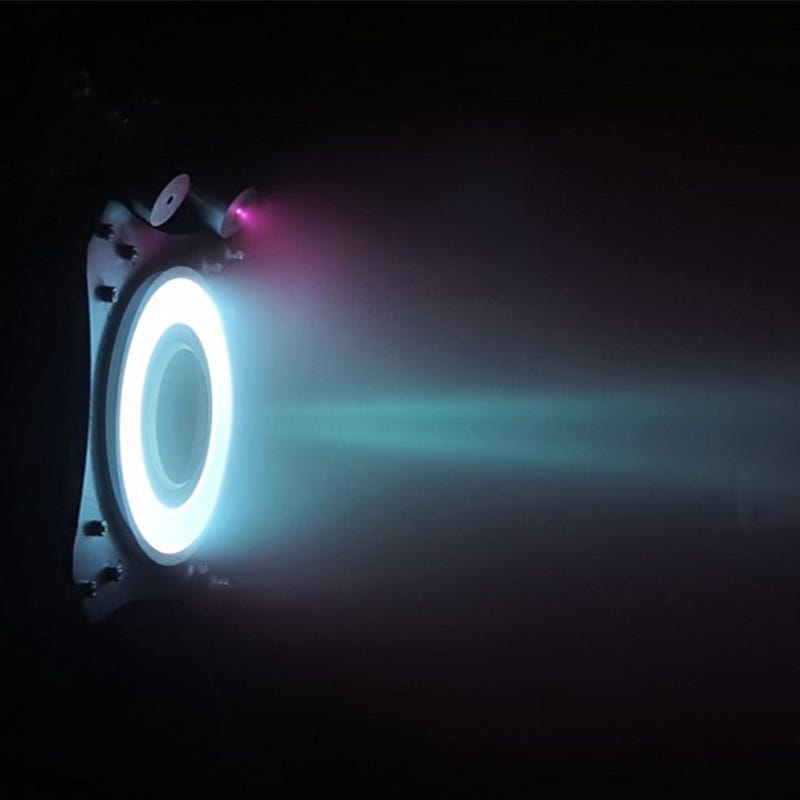
Azerbaijan’s Azercosmos to Provide Geospatial Data to Commonwealth Secretariat
The Commonwealth Secretariat and the Government of Azerbaijan have signed a significant joint declaration in Tonga, focusing on enhancing climate action in Small Developing Island States (SIDS) and other vulnerable member countries. This agreement is complemented by a Memorandum of Understanding (MOU) between Azerbaijan’s state space corporation, Azercosmos, and the Commonwealth Secretariat, which aims to utilise geospatial information for climate action support across Commonwealth countries. The partnership will leverage space technology and geospatial data to improve climate resilience, disaster preparedness, and sustainable development. This collaboration, announced ahead of the COP29 conference to be hosted by Azerbaijan in November 2024, represents a critical step in addressing climate change challenges, particularly for vulnerable communities. The initiative underscores the growing importance of space technology in environmental monitoring and climate strategy implementation, while also highlighting the significance of international cooperation in tackling global climate issues. This partnership is expected to play a crucial role in informing and guiding climate policies across Commonwealth countries, with a particular focus on the unique challenges faced by SIDS and Least Developed Countries.
Russia’s Roscosmos to Have Large Presence at Egypt’s 2024 Airshow
Roscosmos, Russia’s space agency, is set to participate in Egypt Airshow 2024, taking place from 3-5 September 2024 at El Alamein International Airport. The agency plans to engage in strategic meetings with international partners to discuss current and future collaborative opportunities in the space sector. Roscosmos enterprises will showcase a range of advanced space technologies, including NPO Lavochkin's premiere of the Berkut-VR small satellite mockup and the Luna 26 automated orbiter mockup. Additionally, Reshetnev Information Satellite Systems will present the AngoSat-2 communications satellite built for Angola, the next-generation Glonass-K navigation satellite, and the new Marafon small satellite designed for Internet of Things (IoT) applications. This participation underscores Russia's continued efforts to maintain and expand its presence in the global space industry, particularly in emerging markets, while showcasing its latest technological advancements in satellite and space exploration capabilities.
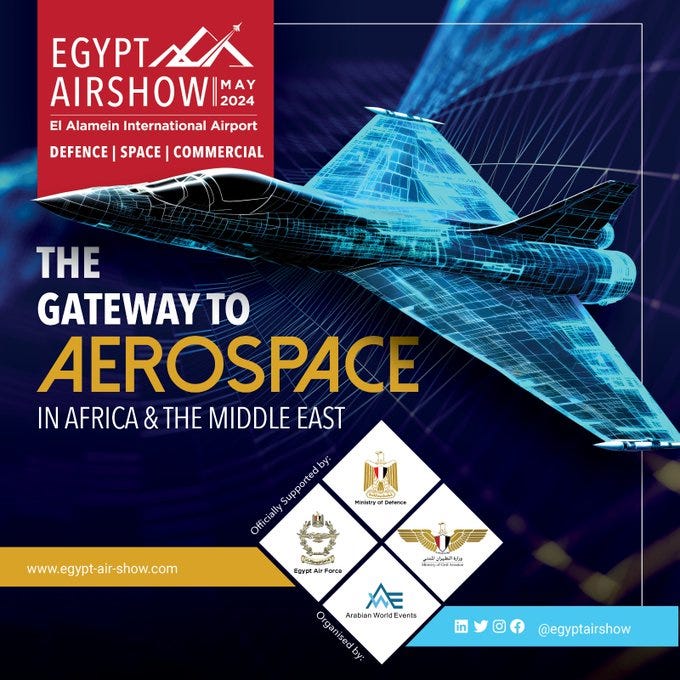
Iran Hackers Accused of Targeting Space and Satellite Sectors in U.S. and UAE
Microsoft Threat Intelligence has revealed that APT 33, an Iranian government-backed hacking group also known as Peach Sandstorm, has developed a new multistage backdoor called "Tickler." This sophisticated malware represents an evolution in the group's tactics, which have traditionally relied on simpler techniques like password spraying. The backdoor has been deployed against targets in the satellite, communications equipment, oil and gas sectors, as well as government entities in the United States and UAE. Peach Sandstorm has been observed manipulating victim Azure cloud infrastructure to gain full control of target systems. The group continues to employ password spraying attacks, targeting thousands of organizations since February 2023, with a focus on space, defence, government, and education sectors. Additionally, the hackers have been conducting social engineering operations on LinkedIn, creating fake profiles to gather intelligence. This development underscores the persistent and evolving threat posed by state-sponsored cyber operations by Iran, particularly in critical infrastructure and strategic sectors.
Morocco Launches Two Nano-Satellites with SpaceX
Morocco has taken a significant step in advancing its space technology capabilities with the launch of two nano-satellites, UM5-EOSAT and UM5SAT-RIBAT, aboard SpaceX's Falcon 9 rocket from California. This achievement is the result of a collaborative effort between Mohammed V University in Rabat, the National Centre for Scientific & Technical Research, and the Royal Centre for Space Studies and Research. Each satellite weighs 4kg and serves distinct purposes: UM5-EOSat for Earth observation and UM5-Ribat for aircraft and ship positioning and data collection. This initiative aims to cultivate a new generation of Moroccan researchers and engineers in space technologies, aligning with King Mohammed VI's vision to leverage scientific research and space technologies for national development. The successful launch underscores Morocco's commitment to enhancing its technological capabilities and positions the country as an emerging player in the region’s space sector.

Report: Qatar Continues to Explore Options for Military Communication Satellite
Tactical Report claims that Qatar's Ministry of Defence is actively pursuing the acquisition of military communications satellites, engaging in discussions with French and U.S. defence departments while also attracting interest from South Korean and American companies. Key players such as Lockheed Martin, RTX (formerly Raytheon), and SpaceX have approached Qatari officials, alongside South Korean firms like Hanwha Aerospace and LIG Nex1. The Qatari Minister of State for Defence Affairs, Khaled Al Attiyah, is carefully evaluating offers, with a particular focus on technology transfer and localisation potential from companies including Thales Alenia Space, Airbus Defence and Space, and Lockheed Martin Space. This multi-faceted approach demonstrates Qatar's strategic commitment to enhancing its military communications capabilities while leveraging international competition to secure favorable terms. The ongoing negotiations and diverse range of potential partners highlight Qatar's ambition to establish a strong presence in space-based military communications, aligning with its broader defence modernisation efforts.
China Expands Space Cooperation with Algeria, Egypt and Sudan, Other African Countries
China has significantly expanded its space cooperation with North African countries, marking substantial progress in satellite development, infrastructure, and technology transfer. Key achievements include the launch of MISRSAT-2 for Egypt, making it the first African country with complete satellite assembly, integration, and test (AIT) capabilities. China has also developed and launched satellites for Nigeria, Algeria, Ethiopia, and Sudan. The BeiDou Navigation Satellite System has been widely adopted across Africa, enhancing agriculture, urban planning, and infrastructure development. China's support extends beyond hardware provision to include training programmes for African professionals in space technology and promoting space education among African youth. This collaboration, formalised under the Forum on China-Africa Cooperation, aims to establish a dedicated China-Africa space cooperation sub-forum. These initiatives not only advance North Africa's space industry but also contribute to improving local living standards and fostering technological self-reliance, positioning China as a key partner in Africa's space ambitions.
Algeria, Morocco Benefit From Access to China’s Meteorological Satellite Network
China has significantly expanded its meteorological cooperation with North African countries, including Algeria and Morocco, through the deployment of Fengyun satellite services. The China Meteorological Administration (CMA) now provides essential weather data to 30 African countries, enhancing their disaster management and weather forecasting capabilities. Since 2018, CMA has granted access to Fengyun satellite data to various African organisations, with 36 users placing 416 orders totaling 687.8 GB of data. The agency has also promoted software platforms like SWAP and Fengyun Earth to improve data utilisation. CMA's emergency support mechanism, activated 11 times since implementation, has delivered 5.1 TB of data to 24 African countries during major disasters. Furthermore, China is fostering educational exchanges with African countries through the Belt and Road Meteorological Visiting Scholar Program. This comprehensive approach to meteorological cooperation underscores China's commitment to supporting North Africa's development and strengthening global disaster resilience, aligning with the broader goals of the Forum on China-Africa Cooperation (FOCAC).
Be sure to catch up with space activities in the region in the next edition of Middle East Space Monitor’s space roundup!




